Learn Outside Blog Series | Nature Journaling | Student Investigations & Activities
Learn Outside Blog Series
-
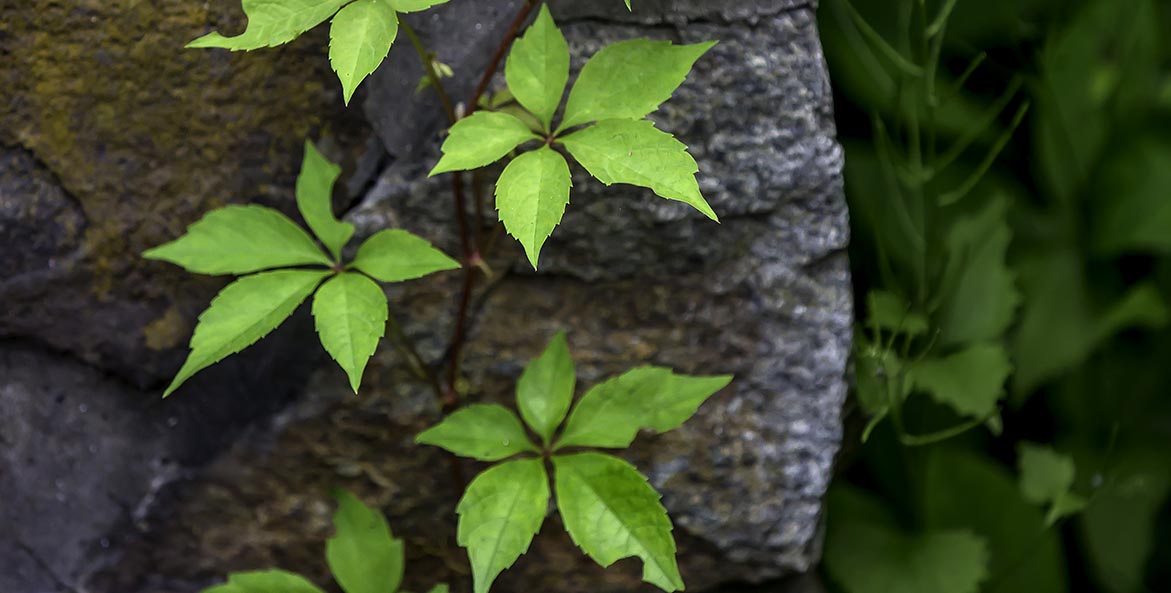
Nature on the Mind
April 14, 2020
According to mindfulness expert Jon Kabat-Zinn, mindfulness is “the awareness that arises from paying attention on purpose, in the present moment, and nonjudgmentally.” To experience the benefits of mindfulness in nature you simply need to go outside, breathe deeply, and consciously recognize the world around you. Take in the sights, sounds, smells, and sensations of nature. Simply exist—and notice.
-

Tune in to April
April 7, 2020
April is when our world reawakens from its winter slumber. The Romans named the month after their word meaning “to open or blossom.” April is the first full month of spring, a time of rapid rebirth and growth, when the days grow longer and the nights get shorter.
-
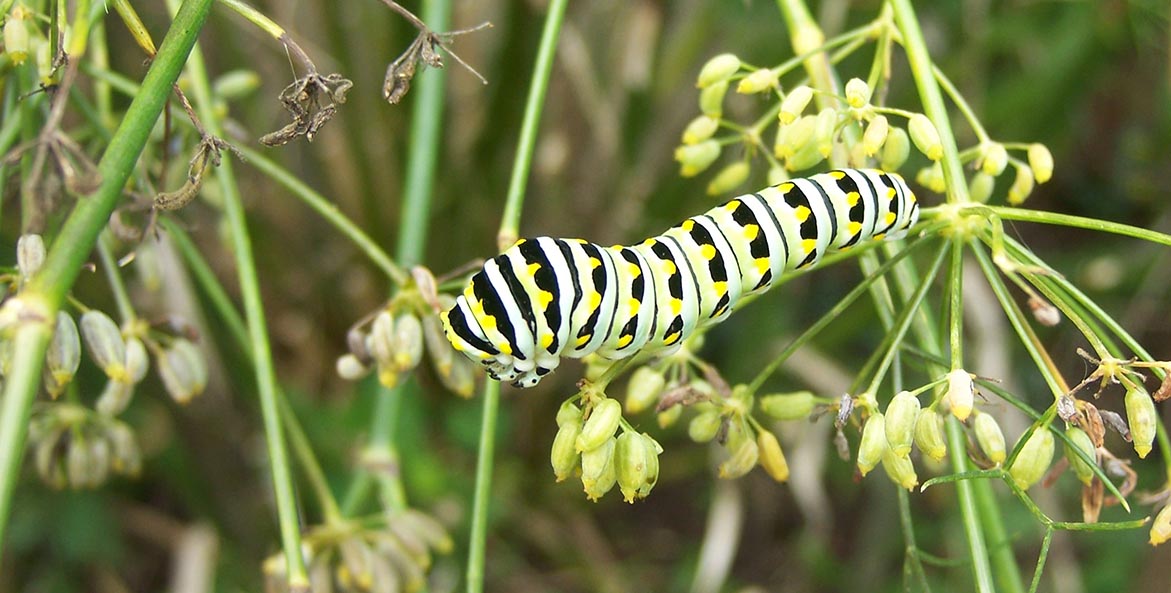
Becoming a Naturalist
March 31, 2020
Nature is everywhere you are. Finding it is easy, especially if you are curious about clouds, trees, weather, stars, rocks, birds, ants, or anything else outside. True magic lies in your curiosity about these everyday things.
-

Why Nature Journal?
March 25, 2020
Nature journaling is a way to creatively connect and build a deep, lasting relationship with the natural world.
-
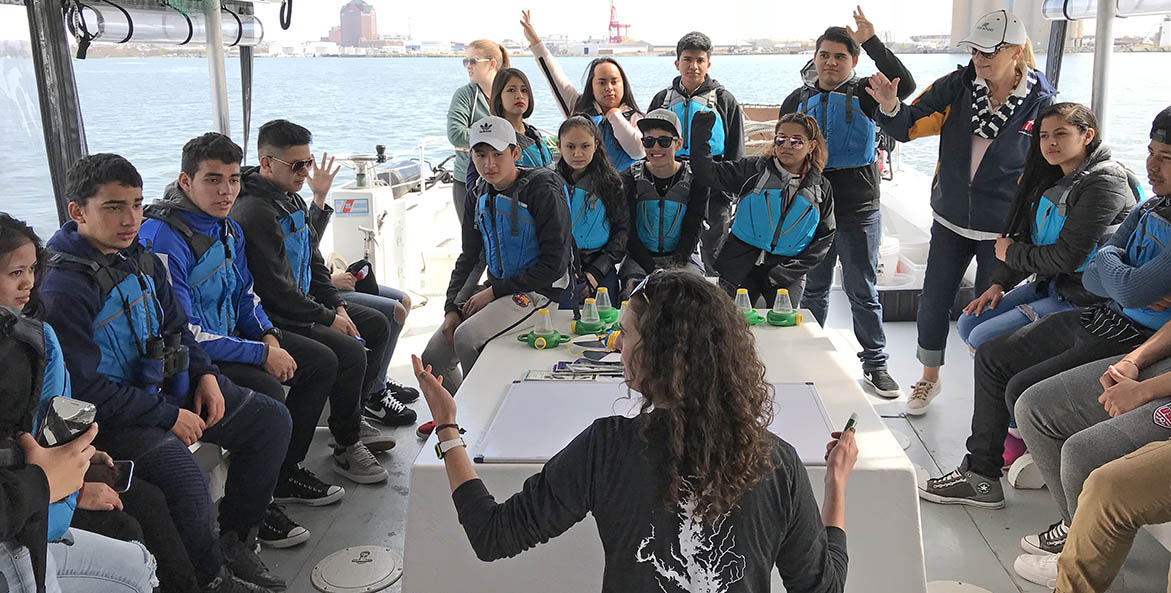
Hope for the Next Decade
January 16, 2020
An educator reflects on teaching the next generation of Bay stewards in a challenging time. "We will no doubt experience more setbacks in the decade to come, but if we can keep on the path of progress established in the last decade, continue to learn and find innovative solutions, we will be closer to a healthy, restored Bay and more resilient in the face of climate change."
-

Beyond the Marsh
October 25, 2019
The loss of Fox island offers a lesson on climate and the importance of environmental education.
-

Mud Between Your Toes
October 17, 2019
CBF educators past and present remember Fox Island magic before the education center closes its doors at the end of this season.
-

Farewell to Fox
October 10, 2019
As the sun fades on CBF’s iconic island education center, we’re more committed than ever to sharing its lessons.
-

Follow the Filter Feeders
August 22, 2019
CBF student leaders headed to the nation’s capital to explore the connections between federal policy and water quality.
-
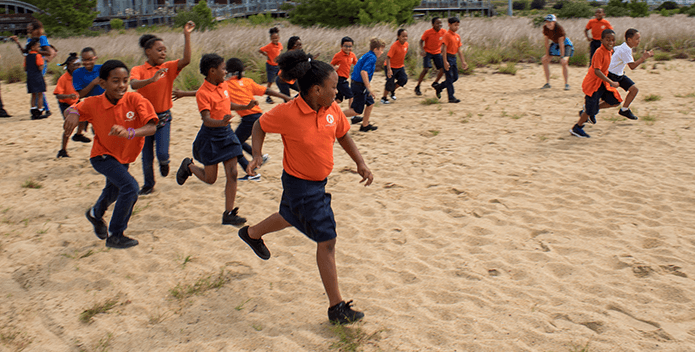
Summertime Learning, Brock Center Style
August 7, 2019
Summertime and being on the water go together like crabs and Old Bay. And while school is still out for most kids, the Chesapeake Bay is a great place to learn when the weather’s warm.
-

Virginia Beach Students OWN ITT!
July 16, 2019
Virginia Beach students recently participated in the Our Watershed Needs Identified for Today and Tomorrow (OWN-ITT) competition, making sustainability focused story maps.
-

O Captain, My Captain
March 29, 2019
A conversation between Captain Tiffany Granberg, Captain Amanda Colianni, and Captain Ronnie Anderson--three of CBF's dedicated female captains and environmental educators in honor of Women's History Month.
-

Students Determined to Continue Efforts to Recognize Hellbenders
December 11, 2018
Despite stalling out in the Pennsylvania House, these students aren't giving up on saving and recognizing Eastern hellbenders.
-

Championing Environmental Literacy
October 10, 2018
Dr. Aaron Spence, Superintendent of Virginia Beach City Public Schools, sat down with us to discuss the importance of environmental literacy and how his schools are leading the way.
-

Parachutes for the Planet: Aiming for a Livable Future
May 17, 2018
We have to be the promise for the planet.
-
Sprouting Enthusiasm for Bay Conservation in the Classroom
May 15, 2018
Looking at a bucket full of gardening spades shouldn’t be exciting.
-

Centre County 7th-Graders Learn About Water Quality in Their Own Backyards and the Bay
May 10, 2018
It was a wet and wild day of outdoor learning at Fox Gap Rod & Gun Club in Centre County, 30 miles east of State College.
-

9 Reasons Spring Is Amazing
April 10, 2018
Planting trees, sailing boats, picking strawberries, celebrating Earth Day, there are so many reasons spring may be the very best season on the Chesapeake Bay!
-

Outdoor Learning Is Important for next Generation of Leaders
August 10, 2017
For children growing up today with much more technology than I had, it’s hard to overstate the importance of learning outside
-

One Amazing Week and the Next 50 Years
July 21, 2017
"Education is the best long-term investment in the Chesapeake Bay." After gathering student leaders from across the watershed for a week of hands-on Bay education, these words by CBF President Will Baker ring true.
-

Celebrating 50 Years with Student Leaders
July 10, 2017
The Chesapeake Bay Foundation has been working for 50 years to Save the Bay by partnering with leaders nationally, regionally, and locally in our communities.
Nature Journaling Blog Series
-

-

Nature Journaling: Proggin'
May 18, 2021
Shells, ceramic pieces, glass shards, and complete bottles are some of the treasures you may encounter proggin'.
-

Nature Journaling: Growing Calm
May 4, 2021
When little of the world could be controlled, gardening quickly became the answer for individuals worldwide and here in the Chesapeake Bay watershed.
-

Nature Journaling: Bay Built
April 20, 2021
Spring is the time of year on the Chesapeake when we bid farewell to the oystering skipjacks and welcome back the hardy deadrises and Bay-builts of crabbing season.
-

Nature Journaling: Return of the Fish Hawks
April 6, 2021
Ospreys are back! These familiar Bay birds, often referred to as fish hawks, are known for their hunting prowess while tracking down their snack of choice.
-

Nature Journaling: Winter Waterfowl
March 16, 2021
Ducks, geese, and swans fly from the frigid north to Bay waters for the winter, bringing vibrant colors and fascinating behavior in a variety of shapes and sizes.
-

Summer Sense of Wonder
June 9, 2020
Over the summer, amazing natural changes will occur in your own backyard. Changes you can observe, document, and ponder.
-

Looking for Love on the Bay
June 2, 2020
June is named for Juno, the Roman goddess of marriage. Appropriately, June is when many living things look for love. All around you can see, hear, and even smell the various methods different species use to woo their mates.
-

The Process, Not the Product
May 26, 2020
Remember, the goal of nature journaling lies in the process of creating and not in the created product.
-

The Bounty of the Bay
May 19, 2020
Scientists agree that ecosystems with a greater biodiversity tend to be more stable. Each species strengthens the ecosystem by performing various jobs and services. Here are some ideas for experiencing the watershed’s grand biodiversity from home.
-

Creativity: An Unhurried Adventure
May 12, 2020
While the current worldwide pandemic can make us uncertain and anxious, taking time for reflection, especially self-reflection, can help us stay grounded and give us a foundation for creativity.
-
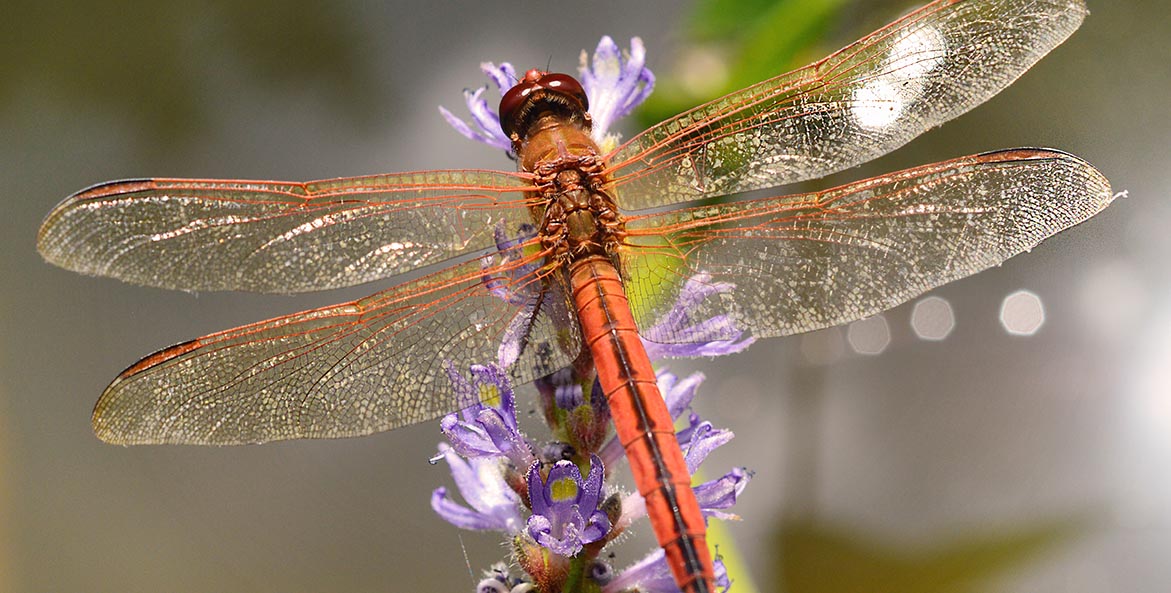
The Color Rush of May
May 5, 2020
The rapid changes May brings offer great inspiration for observing, questioning, and nature journaling.
-

Surrounded by Trees: Seeds, Shade, Beams, and Books
April 28, 2020
Educator Ronnie Anderson reflects on the wonder and importance of trees. This spring, if you can’t plant a tree, at least try to nourish the ones that already exist. Take some time to examine your life and find where it intersects and intertwines with that of a tree.
-
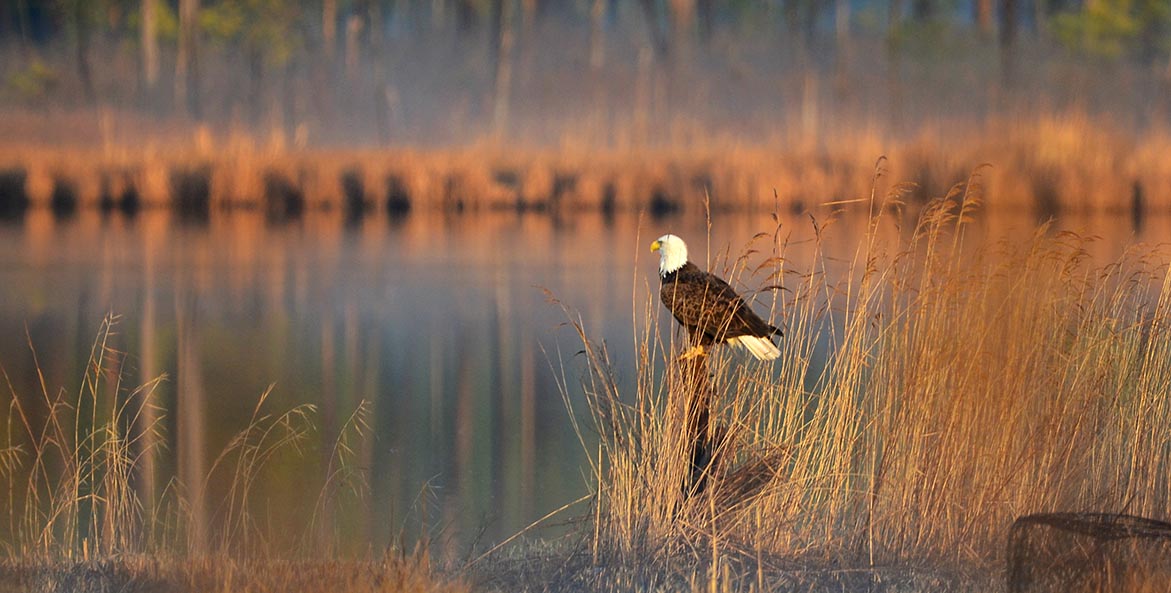
A Celebration of Earth
April 21, 2020
This week we mark the 50th anniversary of Earth Day. Early environmental activists created Earth Day to harness the energy of their growing movement and inspire Americans to protect our planet. Cindy Duncan, a veteran CBF educator who was six years old at the time, shares her recollections.
-

Nature on the Mind
April 14, 2020
According to mindfulness expert Jon Kabat-Zinn, mindfulness is “the awareness that arises from paying attention on purpose, in the present moment, and nonjudgmentally.” To experience the benefits of mindfulness in nature you simply need to go outside, breathe deeply, and consciously recognize the world around you. Take in the sights, sounds, smells, and sensations of nature. Simply exist—and notice.
-

Tune in to April
April 7, 2020
April is when our world reawakens from its winter slumber. The Romans named the month after their word meaning “to open or blossom.” April is the first full month of spring, a time of rapid rebirth and growth, when the days grow longer and the nights get shorter.
-

Becoming a Naturalist
March 31, 2020
Nature is everywhere you are. Finding it is easy, especially if you are curious about clouds, trees, weather, stars, rocks, birds, ants, or anything else outside. True magic lies in your curiosity about these everyday things.
-

Why Nature Journal?
March 25, 2020
Nature journaling is a way to creatively connect and build a deep, lasting relationship with the natural world.
Student Investigations & Activites
-

Wooded Freshwater Wetlands
23 Apr 2020 00:08:32Dive into the Freshwater Wetlands investigation and follow along with CBF educators Ronnie Anderson and Ben Carver to learn about the different type of freshwater wetlands in the Bay watershed, what lives in them, and how they are threatened.
-

Why Is Water Quality Important?
23 Apr 2020 00:05:35What is water quality and why is it important? CBF Educator Rick Mittler explains.
-

Water Quality Testing
23 Apr 2020 00:08:49Follow along with CBF Educator Claire Cambardella as she performs basic tests to measure the chemical water quality characteristics of her local stream.
-

The Watershed Journey of A Raindrop
16 Apr 2020 00:03:26Watch the journey of Rio the Raindrop as it falls to the land near the Appalachian Mountains and travels through various streams and rivers on its way downhill to the Chesapeake Bay. Along the route, Rio, like other raindrops, is affected by pollution as well as natural filters that make the water cleaner.
-
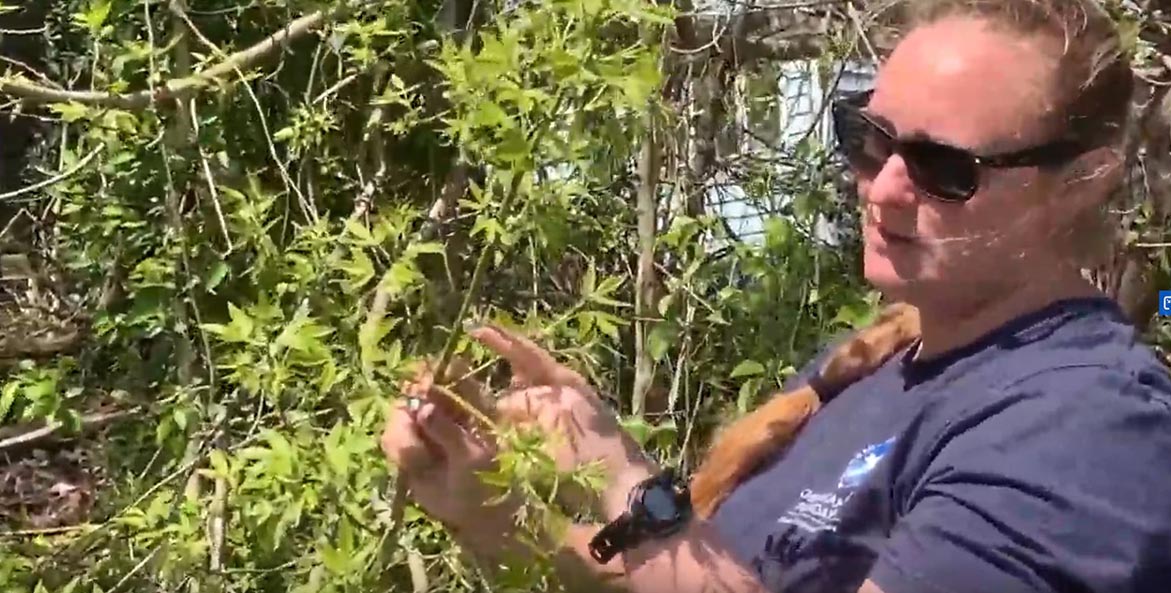
The Importance of Trees
07 May 2020 00:15:08In this video, CBF Educators Liz and Ronnie will walk you through how trees improve water quality, how to identify them, and how you can analyze tree rings.
-

State of Your Bay
24 Apr 2020 00:11:10Explore two different neighborhoods with CBF Educators Megan and Claire. They’ll explain how trees, ditches, lawns, roofs, and other things that make up our neighborhoods are related to the health of the Chesapeake Bay.
-

Spring Peepers
24 Apr 2020 00:04:55On spring nights, a chorus of high-pitched peeps rings out from marshy woodlands and swamps. Follow along with CBF Educator Liz Glaston as she tracks down the source—a tiny tree frog called the northern spring peeper.
-

Sediment in Streams
19 May 2020 00:05:38 -
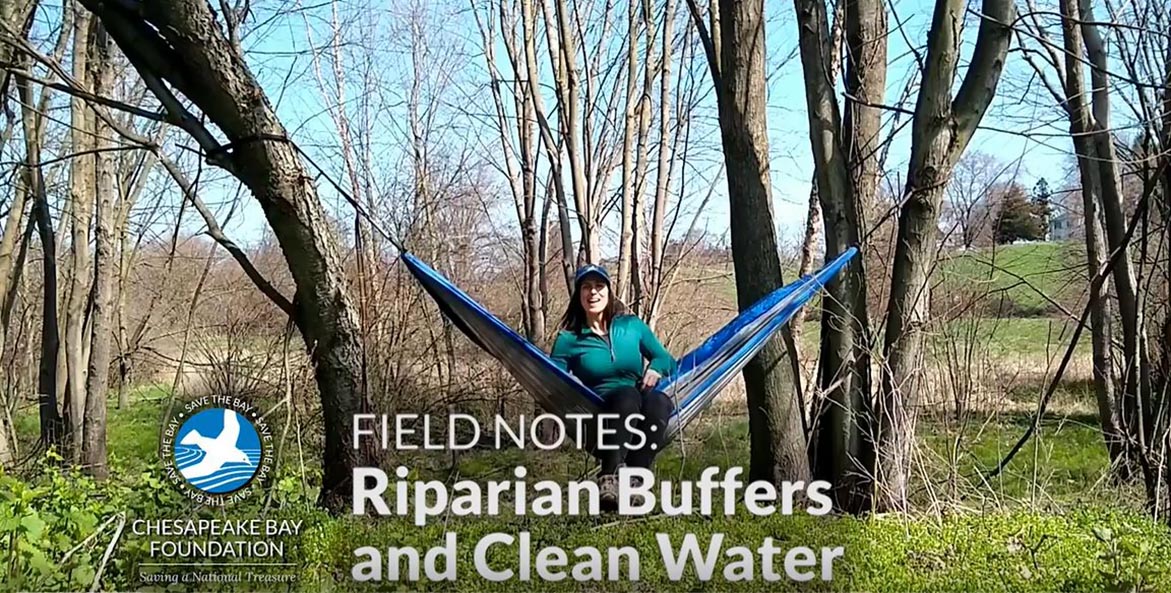
Riparian Buffers and Clean Water
03 Apr 2020 00:12:59Riparian buffers are an important tool to improve the health of the Chesapeake Bay ecosystem. Watch as CBF Field Educator Liz Yocom details how riparian buffers can improve stream health.
-
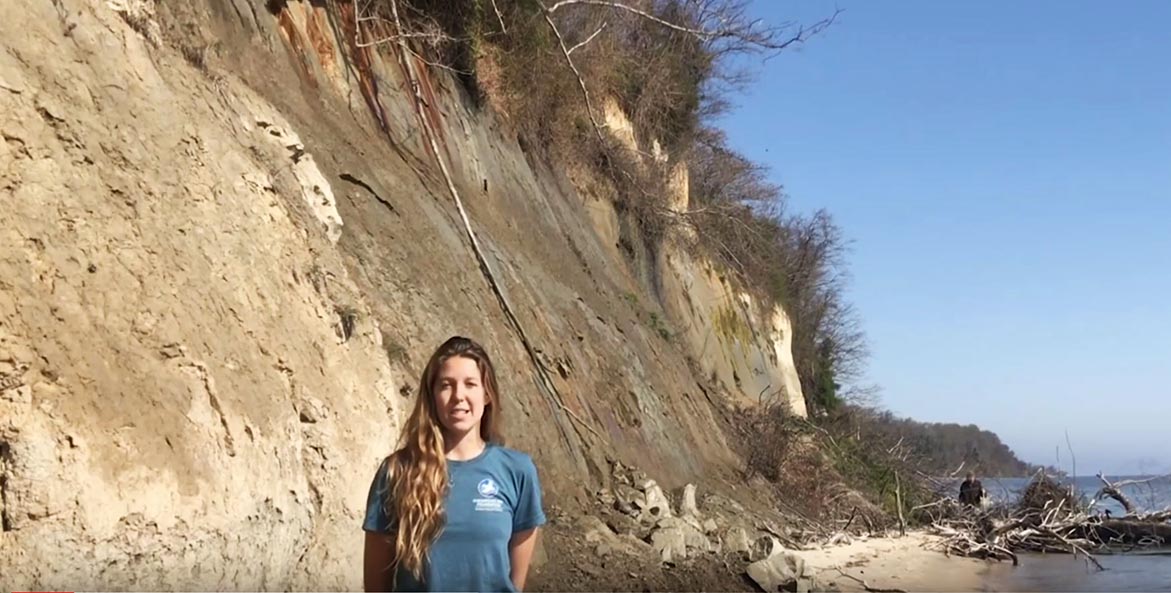
Reducing Erosion is Good for the Bay
30 Apr 2020 00:03:52In this video, join CBF Educators Morgan and Kate at Maryland’s Calvert Cliffs as they explain why reducing erosion is good for the Bay.
-

Oyster Habitat Observations
04 Aug 2020 00:03:50Join CBF Educator Kellie Fiala to explore how oysters build three-dimensional reefs and why this habitat is crucial for a wide variety of aquatic life, including crabs and fish.
-

Oyster Filtering Power
01 Apr 2020 00:04:32See for yourself how oysters make the water clearer. After watching it, use our Oyster Power Worksheet to figure out your family’s water usage and calculate how many oysters you’d need to filter that amount of water.
-

Nutrient Scavenger Hunt
14 Apr 2020 00:06:58In this video, join CBF Educators Maya, Ochae, and Nate as they scour their neighborhoods looking for sources of nutrient pollutants and the methods used to reduce them.
-

Living Shorelines
11 Jun 2020 00:12:27CBF educators Tiffany and Michael discuss the value of "living shorelines" as well as issues related to bulkheads and other armored shorelines.
-
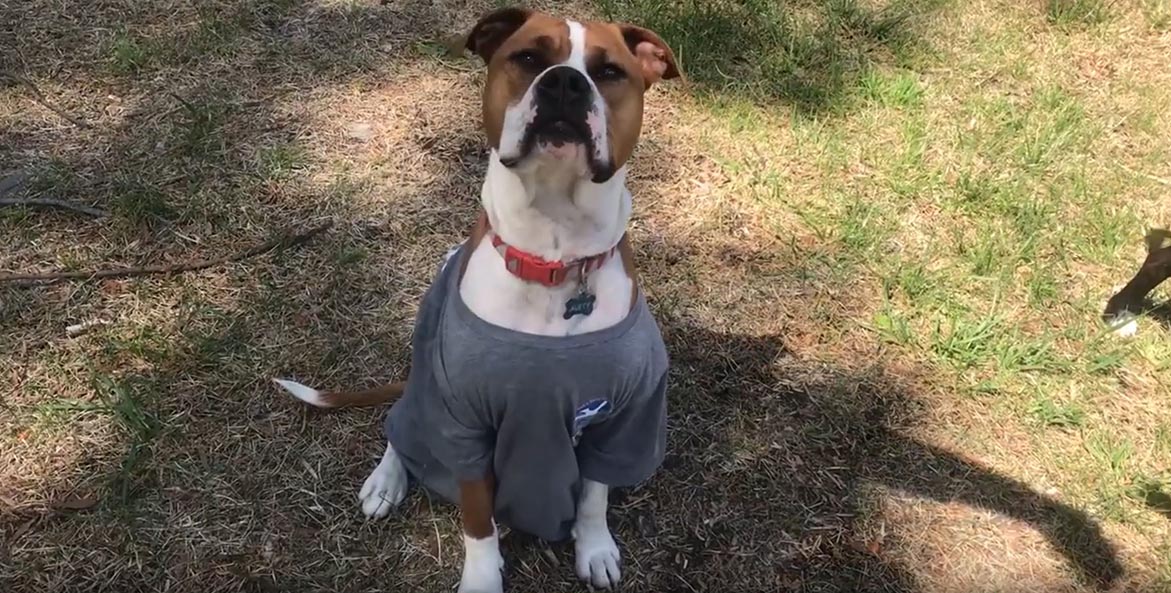
How Forests Help Save the Bay
19 May 2020 00:06:17 -

Green Filter or Gray Funnel?
06 Apr 2020 00:07:17What happens to the water as it falls to the ground? Imagine a rainstorm in a wooded area. Now imagine the same rainstorm on a road, or in a parking lot. Learn about the differences with CBF Captain and Educator Nate Hesse. Then try our investigation, When Rain Hits the Land.
-

Freshwater Stream Health
09 Apr 2020 00:15:57CBF Pennsylvania Educator Doug Walters explores a tributary stream and discusses how to evaluate its health.
-

Fish Adaptations
25 Sep 2020 00:09:23What can you learn about a fish’s food source, habitat, and lifestyle just from looking at it? Join CBF educator Leigh Auth as she goes “fishing” for answers in this video
-

Exploring a Constructed Wetland
23 Apr 2020 00:06:07 -

Early Lives of Blue Crabs
04 May 2021 00:02:39The early life of a Chesapeake Bay blue crab can be perilous. Explore the different stages of a blue crab’s early life in this video.
-

Composting
05 May 2020In this video CBF Educators Tiffany, Leigh, and Claire explain composting basics, how to build a composter at home, and the different stages of decomposition.
-

Blue Crab 101
30 Apr 2020 00:05:32Watch as CBF Virginia Field Manager Ken Slazyk describes blue crabs’ key features and their life cycle in this animated video.
-

Backyard Report Card
04 Jun 2020 00:3:44 -

Ask an Expert: Why Do Ospreys and Eagles Come to the Bay?
09 Apr 2020 Episode 5 | 00:05:32Why do ospreys return to the Bay and its rivers every spring? How do they use aerodynamics while fishing? Can you tell a juvenile bald eagle from an adult? Retired Senior Naturalist John Page Williams explores the habits of these wonderful watershed birds.
-
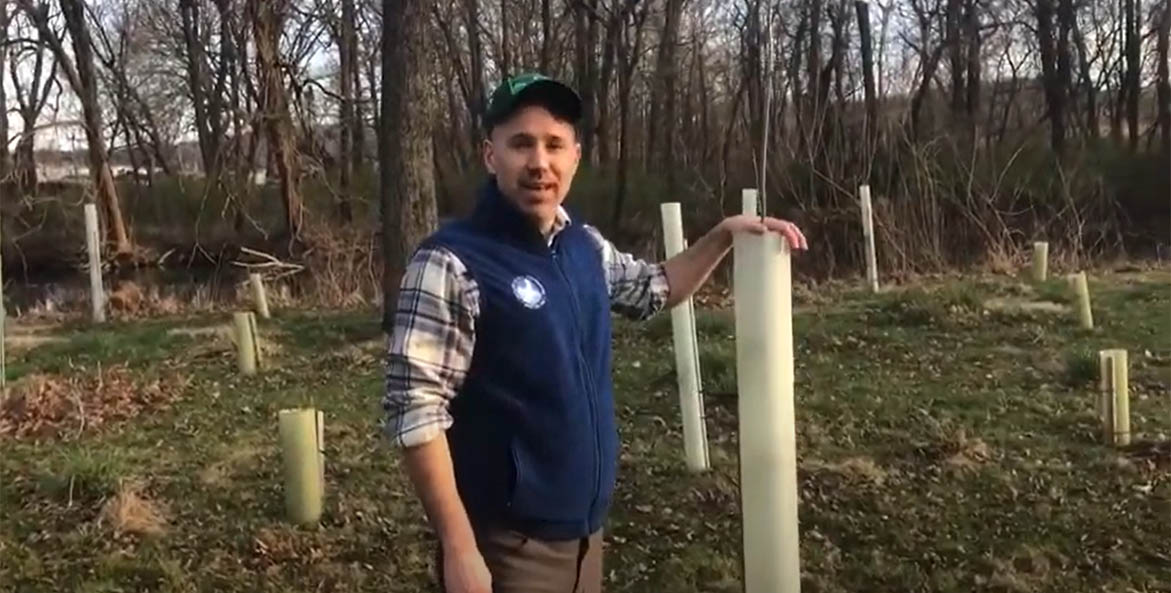
Ask an Expert: Why are Trees VIPs (Very Important Plants)?
14 Apr 2020 Episode 6 | 00:04:53How do trees battle climate change? Can trees reduce flooding? And how do trees lead to healthier rivers and streams? Join Harry Campbell, CBF's Science Policy and Advocacy Director in Pennsylvania, as he explores why trees are VIPs (Very Important Plants).
-

Ask an Expert: Why are Oysters Important for the Chesapeake Bay?
25 Mar 2020 Episode 1 | 00:06:46Why is an oyster hard to shuck? How do young oysters choose their homes? What happens when an oyster filters water? CBF’s Maryland Fisheries Scientist Allison Colden gets up close and personal with the Bay’s famous bivalve.
-

Ask an Expert: Why are Freshwater Mussels so Cool?
27 Mar 2020 Episode 2 | 00:07:06How do freshwater mussels trick fish into helping them out? Why are they good for streams and rivers? How many species of freshwater mussels are there in the Bay watershed? CBF's Virginia Senior Scientist Joe Wood shares why he loves these amazing mollusks–and why you should too.
-

Ask an Expert: What's the Buzz About Bee Balm?
12 May 2020 Episode 9 | 00:02:05What native plant is medicinal, can be used as a tasty tea, is good for the environment, and has beautiful flowers that attract bees and butterflies? Find out why bee balm could be a great addition to your garden with CBF's Jay Ford.
-

Ask an Expert: What's the Bay's Shad and Herring Migration?
22 Apr 2020 Episode 7 | 00:02:40Where do shad and herring lay their eggs after migrating from the ocean? Chris Moore, CBF's Senior Regional Ecosystem Scientist, explores the remarkable spring shad and herring migration.
-
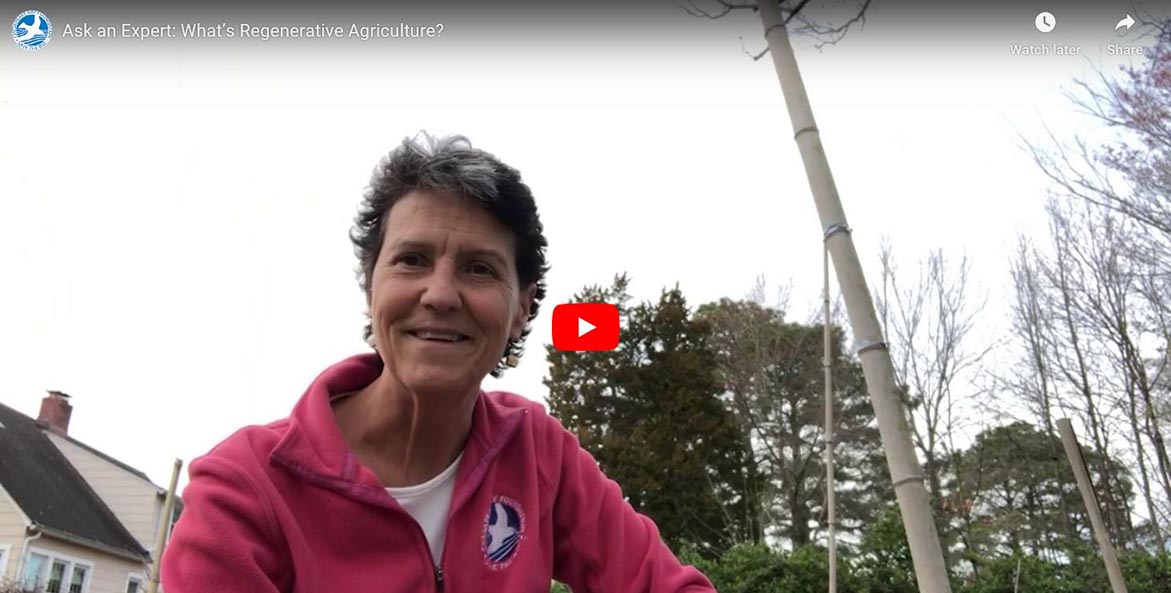
Ask an Expert: What's Regenerative Agriculture?
27 Mar 2020 Episode 3 | 00:05:02We've heard about growing sustainable food, but what if farmers could go beyond preserving the environment and actually improve it? CBF's Director of Science and Agricultural Policy Beth McGee explores the pollution-reducing, carbon-capturing promise of regenerative agriculture—from her own backyard—and shares how you can help.
-
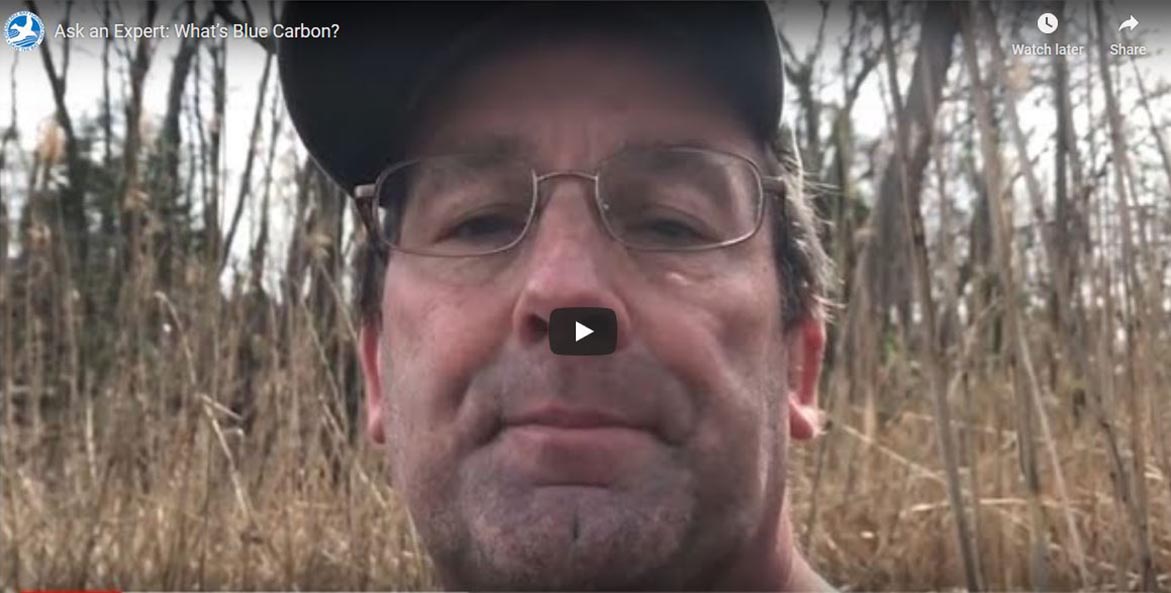
Ask an Expert: What's Blue Carbon?
27 Mar 2020 Episode 4 | 00:05:28Why do marshes sometimes smell like rotten eggs? How do they migrate as sea levels rise? And what does it all mean for the Bay in a changing climate? CBF Maryland Senior Scientist Doug Myers digs into the muck to explain the mysteries of 'blue carbon.'
-

Ask an Expert: What Is a Fish Kill?
14 Aug 2020 Episode 10 | 00:03:23Why do dozens, hundreds, or sometimes even thousands of fish wash ashore dead? What types of environmental factors can cause these mass die-offs? How can we prevent them from happening?
-

Ask an Expert: What are Mummichogs (and Why are They Amazing)?
06 May 2020 Episode 8 | 00:06:16Believe it or not, mummichogs were the first fish sent into space. This "mud minnow," common in brackish marshes, lives an amazing secret life serving science, wildlife, and fishermen. Learn more from Chris Moore, CBF's Senior Regional Ecosystem Scientist.
-

An Introduction to Backyard Birding
12 May 2020 00:14:15Join CBF Educator Tiffany Granberg as she explains how you can identify the birds that may frequent your backyard.



